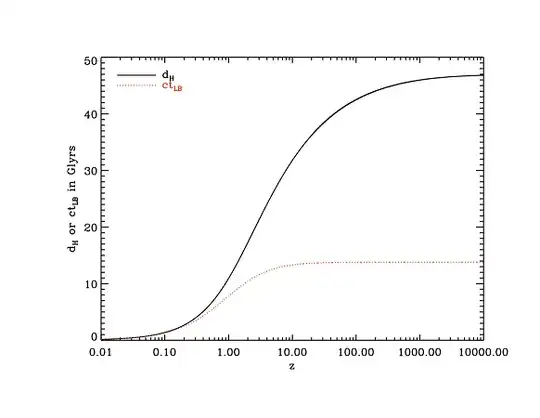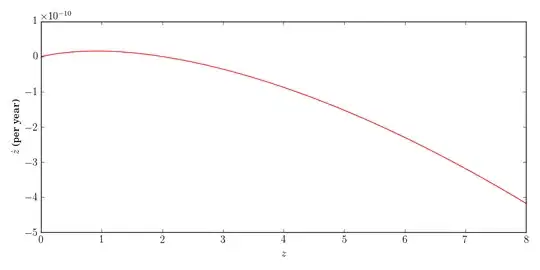To answer this we need to find out how rapidly the red shift is changing, then decide if the change is large enough to measure on the sort of timescales we can use for the measurement.
We describe the expansion of the universe by a scale factor that we conventionally set to unity right now. Then if the current distance to a star is $x_0$ the variation of the distance with time is given by:
$$ x(t) = a(t)x_0 $$
And a quick differentiation gives the acceleration of the star as:
$$ \ddot{x} = \ddot{a} x_0 $$
The change in velocity, and hence the change in red shift, in some time $t$ is approximately $\Delta v = \ddot x t = \ddot a x_0 t$ if we approximate the acceleration as constant, which is a good approximation on human timescales.
The acceleration of the scale factor is given by the second Friedmann equation:
$$ \frac{\ddot a}{a} = \frac{-4\pi G}{3}\left( \rho + \frac{3p}{c^2} \right) + \frac{\Lambda c^2}{3} $$
The pressure is approximately zero and currently $a = 1$ so this simplifies to:
$$ \ddot a = -\tfrac{4}{3} \pi G\rho + \tfrac{1}{3}\Lambda c^2 $$
The matter density (including dark matter) is around two hydrogen atoms per cubic metre or converting to SI:
$$ \tfrac43\pi G\rho \approx 9 \times 10^{-37} \,\text{s}^{-2} $$
The current value of the cosmological constant is $10^{−52}$ m$^{−2}$, and this makes the second term:
$$ \frac{\Lambda c^2}{3} \approx 3 \times 10^{-36} s^{-2} $$
Giving us the current value for $\ddot a$:
$$ \ddot a \approx 2 \times 10^{-36} s^{-2} $$
It just remains to decide how far away we can reliably monitor a single star, and how long we want to do the experiment. Let's take a billion light years as the distance ($10^{25}$ metres) and ten years for the experiment duration ($3 \times 10^8$ seconds) and we get:
$$ \Delta v \approx 0.006 \,\text{m/s} $$
We can measure the red shift due to velocities this small, for example using the Mossbauer effect, but only under very carefully controlled laboratory conditions. We would have absolutely no hope of doing it using a star a billion light years away. In any case the star will have some proper motion due to the gravitational fields it is travelling in and we could not be sure that a velocity change this small wasn't just due to local gravitational acceleration rather than the expansion of spacetime.
In summary, it's a nice idea but sadly infeasible.

